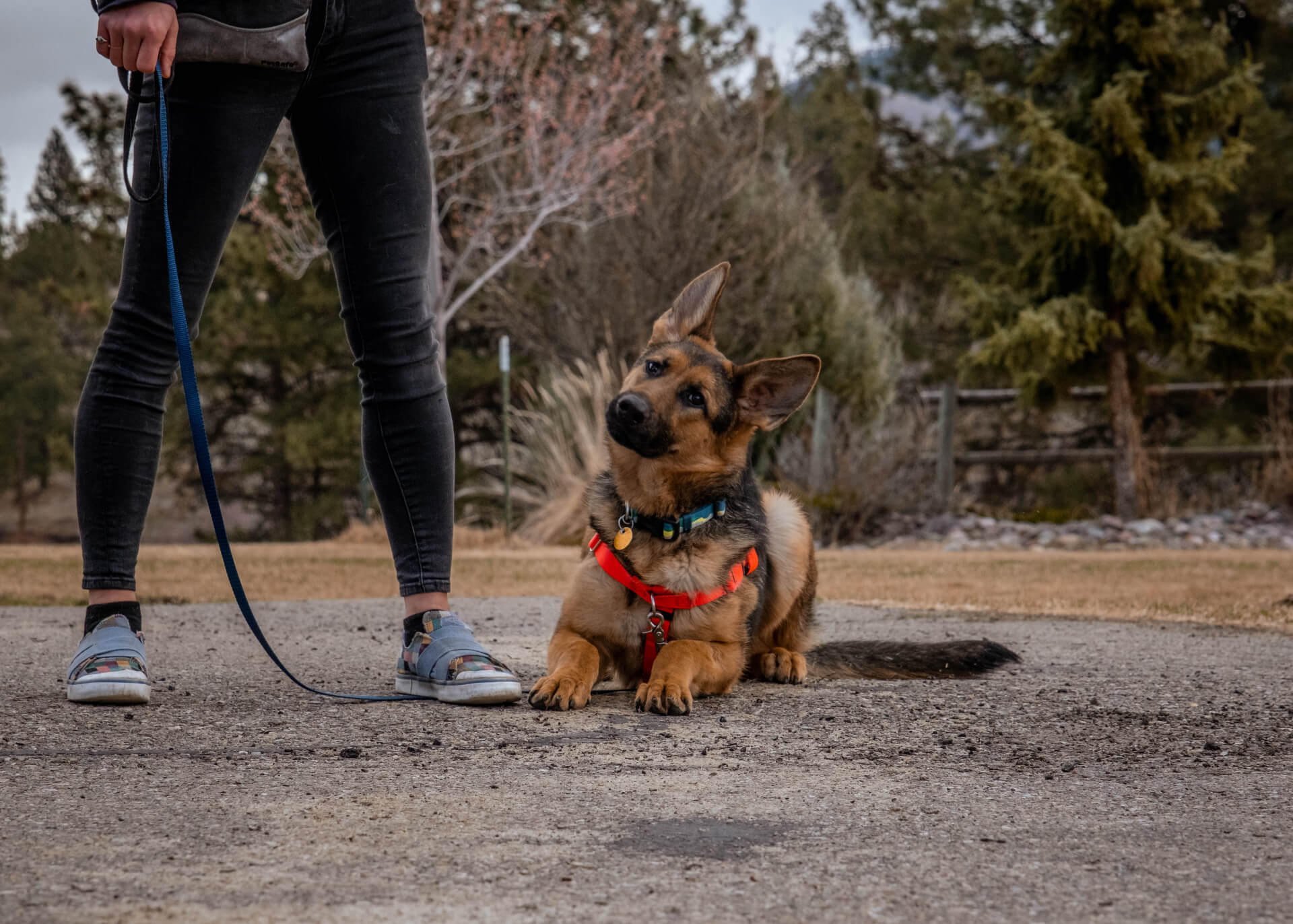
Helping Kids and Dogs Succeed
It is rewarding to have a household where children and dogs get along, grow up together and play together. Although kids and dogs can be the best of friends, measures must be taken to ensure safety and promote positive relationship building. Kids and dogs speak different languages and express affection in different ways. Some dogs do not appreciate being approached or touched in certain ways. Senior dogs may have painful joints and react poorly if leaned on. Unfortunately, most dogs do not like being hugged. On top of this, humans and especially kids, can have a difficult time understanding more subtle signs of discomfort that a dog displays. Dogs are indeed “man’s best friend” but it is estimated children have a 50% chance of being bitten by a dog and kids ages 5-9 are the most likely age demographic to be bitten. Most often, these bites are by a dog they already know or live with. As a parent or guardian of kids and dogs, you can ensure both are set up for success by recognizing canine stress signals, providing your dog a place to relax, supervising when your dogs and kids spend time together and helping your dog form positive associations!
Monitor All Interactions
- Think of dog and kid time as “play dates.” Direct supervision is required to ensure interactions are appropriate. Serious accidents can happen in a split second.
- Dogs, like people, have boundaries. Expecting a dog to tolerate (or even enjoy) grabbing, chasing, poking, hugging, or other invasive behaviors is unsafe and unfair to your pup. We would never grab and pull on a human family member’s hair, use them as a step stool or force them to play dress-up! Supervision allows you to intervene before your dog feels uncomfortable.
- Puppy and kid interactions should be supervised too! There are misconceptions about puppies learning to tolerate certain behaviors if they grow up together. Unfortunately, some puppies who are inadvertently mistreated may grow up to feel the need to proactively defend themselves from children to prevent more negative experiences.
- Signs your dog may need a break: avoiding children and/or moving away from their approaches, stiff or tense body, a closed mouth, side eye, tucked tail, raising a front paw, big “grinch-like” panting when it’s not hot, ears back, avoiding eye contact, yawning, growling, barking or snapping. A wagging tail does not necessarily mean she is having a good time. Don’t wait for your dog to hit her breaking point before intervening!
- Do not scold or punish your dog for showing they’re uncomfortable. While it’s normal to feel scared or upset if your dog escalates to growling at children, scolding may teach your dog it’s not okay to show appropriate warning signals. The next time she’s feeling uncomfortable with their behavior, she may go straight to snapping and biting.
Set Up A Safe Space For Your Dog
- When you cannot supervise interactions, your dog should have a separate place to relax. This safe space can be great when the kids need space from the dog, when the dog needs space, when you need a break from supervising or when there is a lot of activity happening in the house (like a birthday party or play date). This safe space can pull double-duty and can also help prevent undesirable doggy behaviors like chewing on kids toys and counter surfing when you’re not looking!
- Select a quiet location that will allow your dog to rest away from the chaos. Dogs need roughly 14 hours of sleep a day and puppies need even more. A lack of rest can make them cranky just like a toddler! Your dog’s safe space could be something like a large crate draped with an old sheet (see our handout Crate Training an Adult Dog), a spare room with a baby gate or an ex-pen. There should also be a physical barrier in place between her and the children; a corner of a quiet room is a great choice but it should have a puppy pen around it.
- Don’t forget the essentials. In your dog’s safe space, provide water, soft bedding or their favorite blanket, a selection of appropriate chew toys and a food project like an edible chew like a bully stick or pig’s ear to help them get comfortable with separation from the family.
- Establish rules with the family that the dog is not to be disturbed or teased when she’s in her safe space.
- Stick to it. It’s normal to want to let the puppy loose unsupervised with the kids if she is whining or barking to come out. By providing her food-based enrichment like stuffed kongs, frozen slow bowls smeared with canned food or edible chews she’s more likely to be content spending time in her space. If your pup is truly having a hard time adjusting, reach out to one of the certified trainers at HSWM.
Give Kids The Good Jobs
- By focusing on forming positive associations, if there are any accidental encounters or “whoops” moments, your dog is more likely to be tolerant rather than act aggressively. Think of it like putting money in a bank account for the day they need to make a withdrawal, like if your child accidentally steps on the dog’s tail.
- Encourage your kids to be involved in the best ways by helping out with putting the kibble into the dog’s bowl (if your dog does not guard food), trick training or parent-facilitated fetch with squeaky balls. She will quickly learn that your kids are involved in all the things she loves like treats and toys. This can also teach your dog to play appropriately with your child rather than herd them or treat them like toys.
- Adults should do the not-so-good jobs. Parents or guardians should be the ones solely responsible for bathing, grooming, nail trims, moving the dog by her collar, walking the dog (until the kids are teenagers) or removing anything from her mouth. All of these tasks are higher risk for little ones.
- If the kids want to be involved in other ways, encourage them to fill kongs or other food toys for her to enjoy in her safe space, rotate out her toys to introduce novelty, go on “poop patrol” in the yard with a pooper scooper or even do crafts like weaving her a fleece tug toy!
Teach Kids How to Show Her Affection
- We’re all guilty of wanting to hug and kiss our dogs! They’re cute and soft, and we want to show them affection in our human way. However, most dogs are uncomfortable with the face-to-face contact of kissing and can be startled or unnerved by the restriction of a hug.
- Instead, try the “remote kiss.” To show the dog they love her, kids can kiss the palm of their hand and with the same hand stroke gently down the dog’s back. It’s a compromise your dog will be happy with!
- Set a good example. Most kids will learn to interact with dogs by watching the way the adults do. One of the best ways to teach kids how to respect our dogs is being mindful of our own interactions with her.
Final Suggestions
- If you are ever concerned about the safety of your children with your dog, separate your dog from the kids with a physical barrier (door, crate, etc.) and contact a certified professional trainer, like the HSWM Training & Behavior Team, for help.
- Repeated exposure to poking, prodding, grabbing, or hands in her food bowl by children will not make your dog more tolerant and can actually cause her to form negative associations. This is very dangerous and can escalate to aggression quickly.
- Teach your child to always ask for permission before petting other people’s dogs.
- If your relatives or friends have dogs, teach your child to ask the owner of the dog how to best interact with them. Nearly 80% of dog bites on children are sustained from a friend or family member’s dog (CDC). A dog will always better tolerate handling from their immediate family and may not allow the same handling from friends or strangers.
- Popular media portrays dogs that are completely tolerant of all handling, love being picked up and hugged, etc. Although some dogs are like this, many are not. It is best to err on the side of caution, especially with a newly adopted dog or puppy. The good news is that dogs can become more tolerant of physical affection if you respect their boundaries and develop trust over time (though some dogs may never enjoy being hugged or kissed on the face). Unfortunately, if a dog shows aggression towards a child, it is extremely distressing for the family and drastic, traumatic actions are often required.
Citations:
CDC. “Annual Dog Bite Statistics for the United States of America.” Kids-n-K9s Dog Bite Prevention, https://kids-n-k9s.com/dog-bite-statistics-for-the-united-states/. Accessed 24 April 2022.
